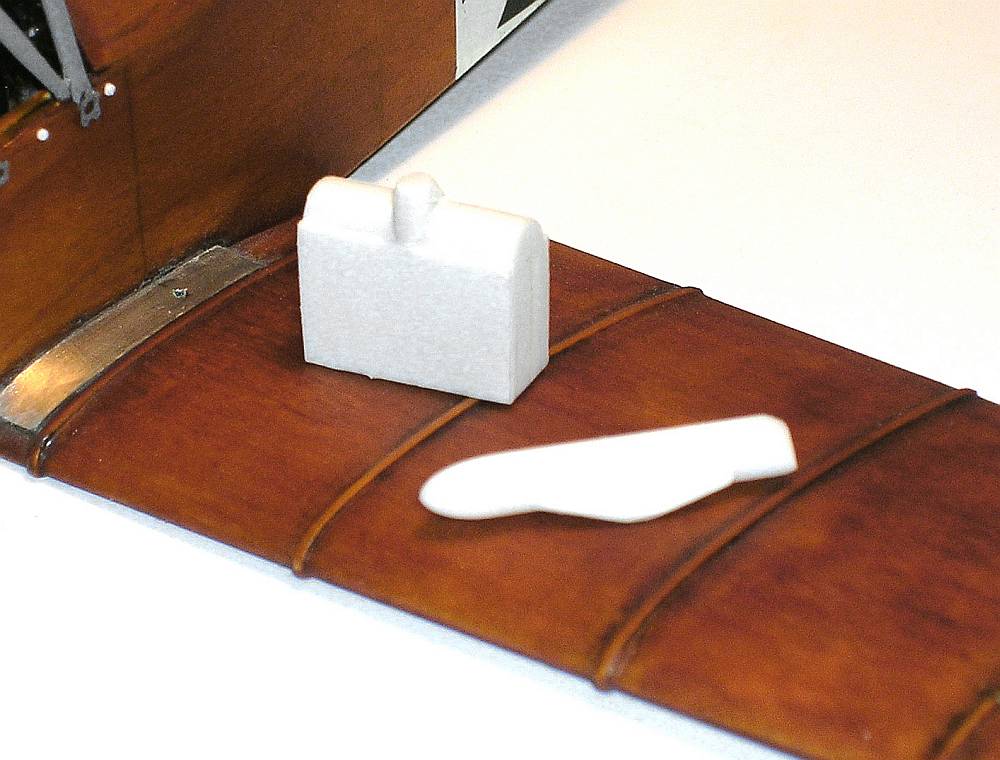Lloyd C.V (WKF) 82.24
The Lloyd C.V. marked an end of the all veneer wing development. To achieve significant weight reduction and to the matter of a perfectly streamlined design.
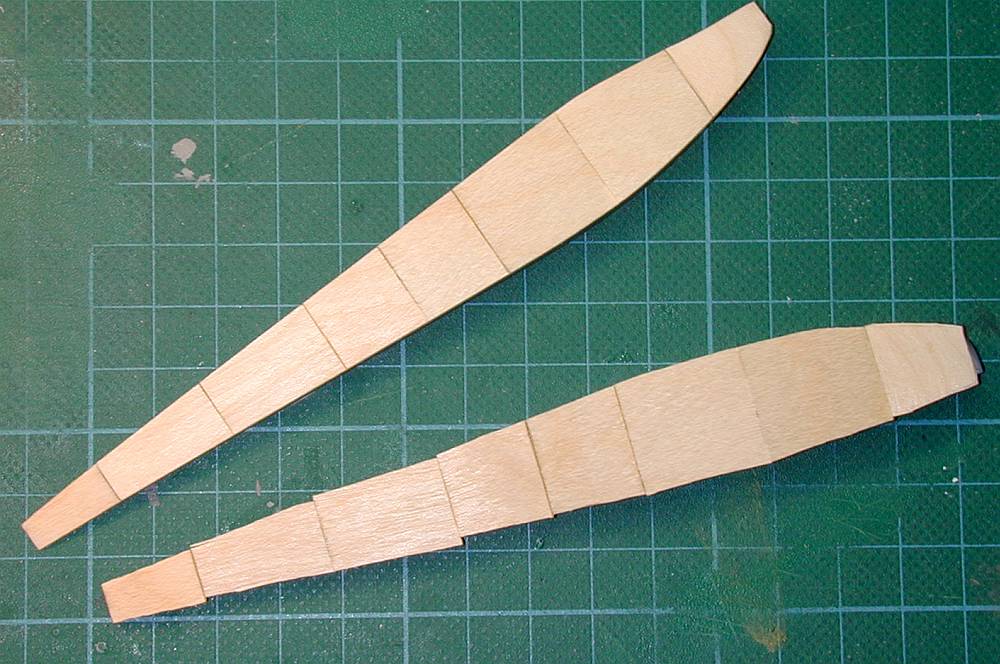 Different to standard wing construction, the wing consisted of spanwise stringers instead of spars, arround only very few wing rips to give the required profile and shape. Covered with 1,2mm plywood this wing was a very solid construction. The only problem was if holed by bullets the plywood skin was very difficult to repair. And in battlefield conditions the glue of the plywood was very sensitive to humidity.
Different to standard wing construction, the wing consisted of spanwise stringers instead of spars, arround only very few wing rips to give the required profile and shape. Covered with 1,2mm plywood this wing was a very solid construction. The only problem was if holed by bullets the plywood skin was very difficult to repair. And in battlefield conditions the glue of the plywood was very sensitive to humidity.
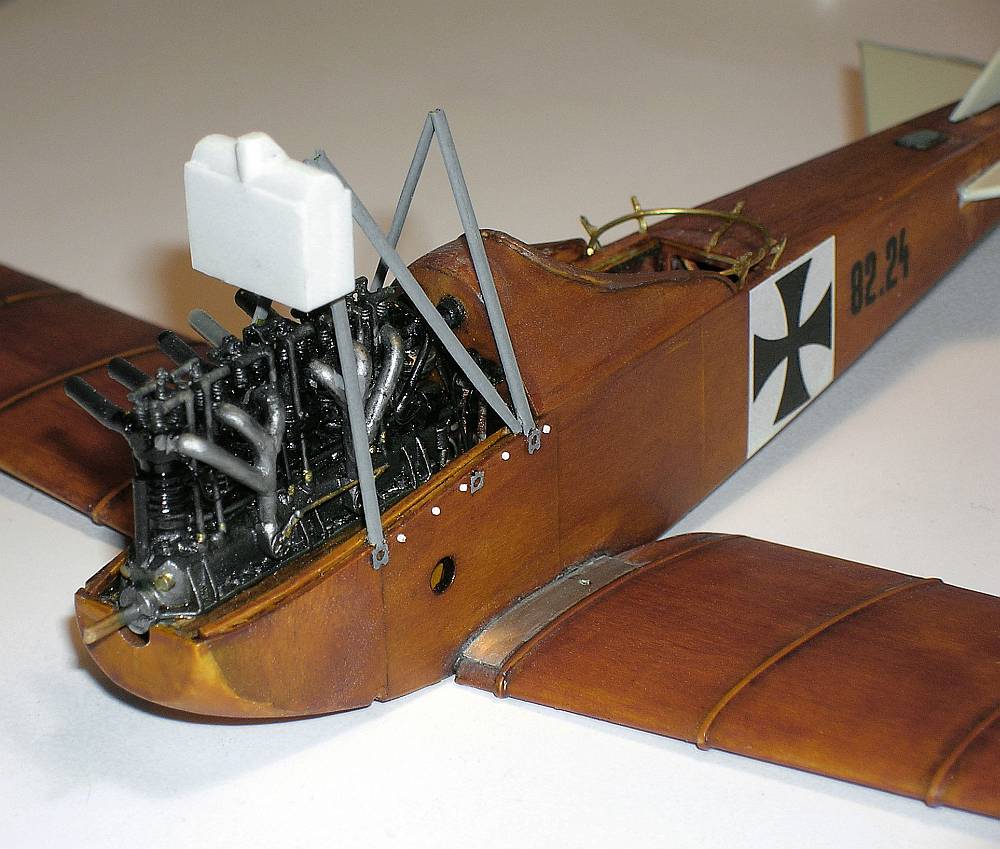 As a twoseater the Lloyd C.V was rather small in dimensions, very fast and depending on design features closer to fly as a scout than an observer aircraft.
As a twoseater the Lloyd C.V was rather small in dimensions, very fast and depending on design features closer to fly as a scout than an observer aircraft.
As a result of its speed and high wing loads the C.V had very high landing speeds. Under the controls of rather inexperienced pilots lots of landing crashes have been the result.
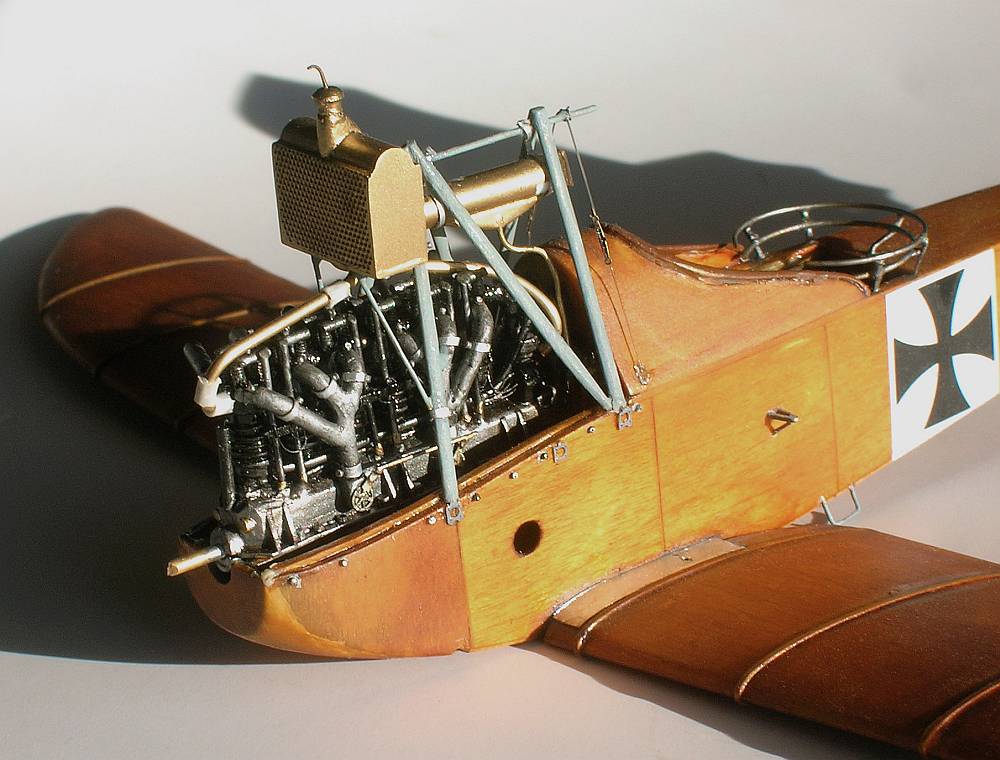 Several series of this craft were built:
Several series of this craft were built:
The Lloyd manufactured series 46.00 to 46.49 powered with the185 hp Austro-Daimler AD 6 series 18.000 inline engine.
The WKF license built series 82.01 to 82.48 powered with the 220 hp MAG built Benz series 81.000 inline engine.
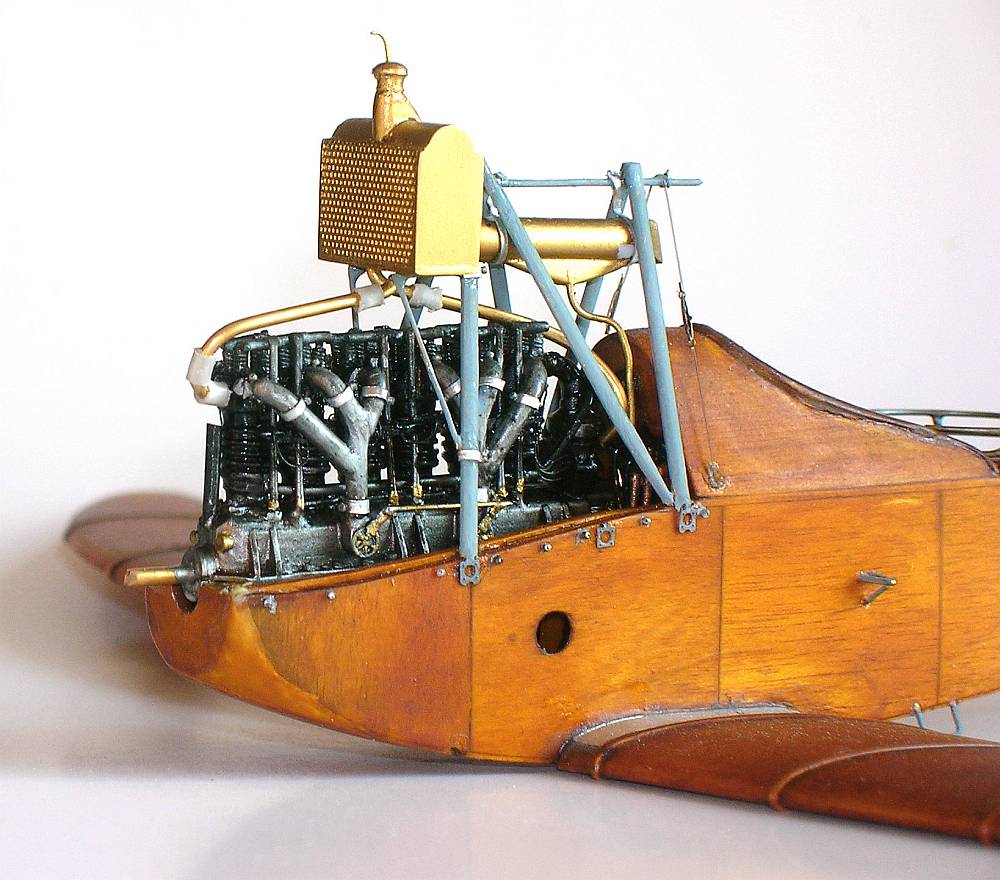 And finally The Lloyd manufactured series 46.51 to 46.98 powered with the185 hp (136 kW) Austro-Daimler AD 6 series 18.000 inline engine.
And finally The Lloyd manufactured series 46.51 to 46.98 powered with the185 hp (136 kW) Austro-Daimler AD 6 series 18.000 inline engine.
In the beginning, the new license built MAG Benz engine suffered severe problems and needed a complete redesign of main engine parts. The outcome was a powerful but heavy engine. Also a more efficient cooling
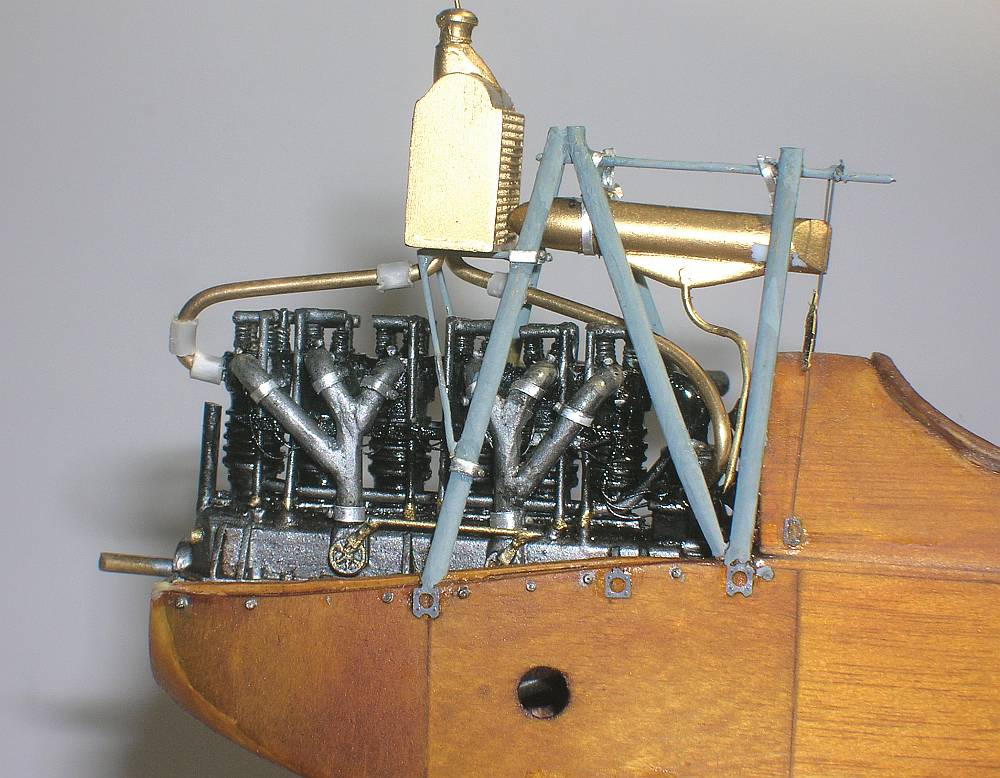 system was required. Under aspect of increased weights the C.V airframe design underwent major modifications. In fact the Series 82. aircraft did look like the Daimler powered series 46. but are very different in their layout and constructive detail.
system was required. Under aspect of increased weights the C.V airframe design underwent major modifications. In fact the Series 82. aircraft did look like the Daimler powered series 46. but are very different in their layout and constructive detail.
All this put heavy delay on the delivery of the WKF built Series 82. Lloyd C.V and finally it was accepted in August 1917.
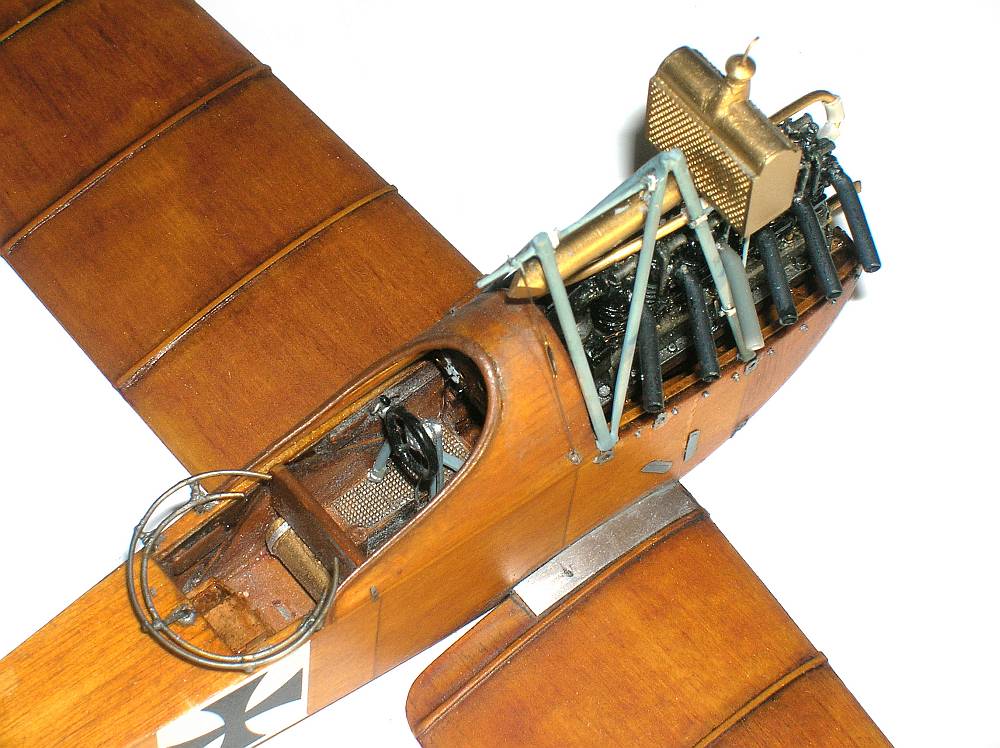 Most Lloyd C.V. served on the eastern front. Later when withdrawn from operational service it was used as advanced trainer. Some had been attached to the postal flight to deliver mail to the army units.
Most Lloyd C.V. served on the eastern front. Later when withdrawn from operational service it was used as advanced trainer. Some had been attached to the postal flight to deliver mail to the army units.
I was very happy when the kit from Special Hobby appeared on the market. There were no doubts that I had to build it with a real veneer finish. That means... all wood
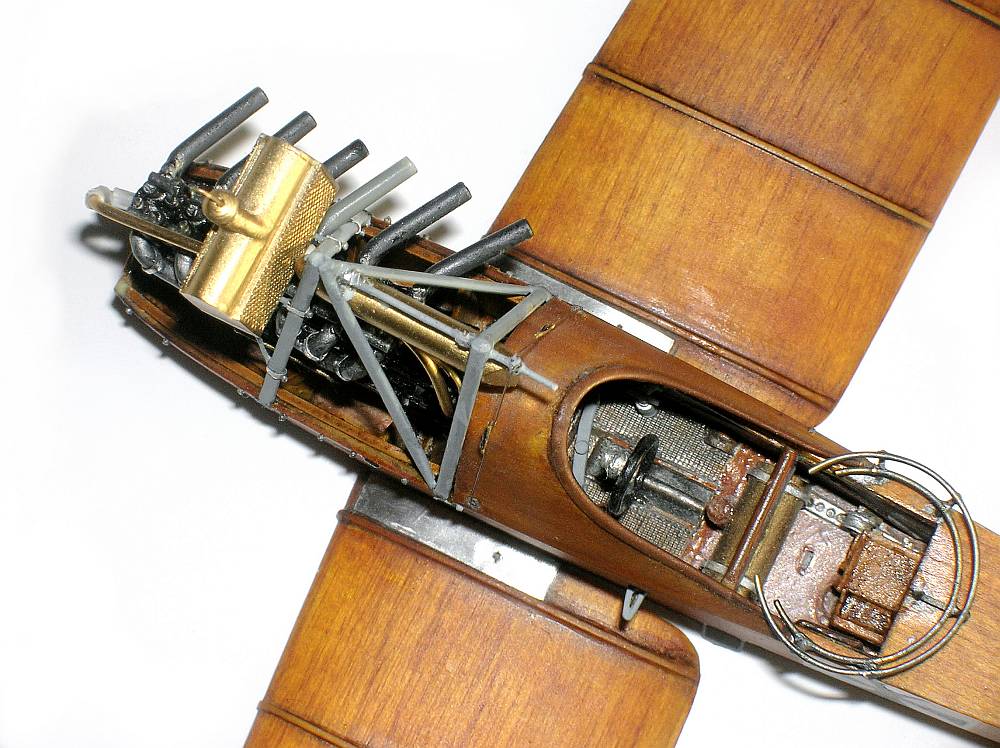 surfaces will be made of wood. The next decision was, not to build the Daimler engine powered version as supplied in the kit. I prefer the appearance of the more powerful Benz engine displayed in the WKF built 82. Series.
surfaces will be made of wood. The next decision was, not to build the Daimler engine powered version as supplied in the kit. I prefer the appearance of the more powerful Benz engine displayed in the WKF built 82. Series.
This has nothing to do with the quality of the kit, because it is nicely moulded with fine details and I always appreciate manufacturers releasing kits of Austro-Hungarian aviation.
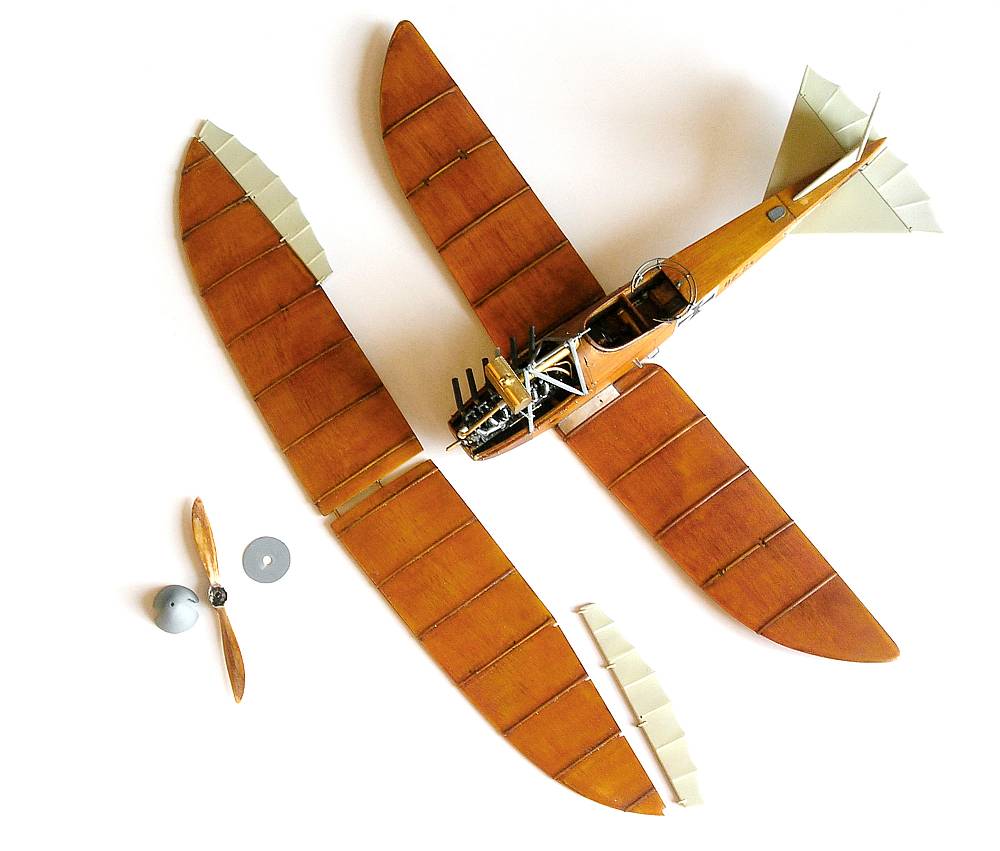 My friends always call me crazy if i tell them I am working on a kit, because usually most of the parts are remaining in the box.
My friends always call me crazy if i tell them I am working on a kit, because usually most of the parts are remaining in the box.
Lets start with the wings. Parts supplied with the kit could not be used for what I had in mind. So I decided to make them of plastic card, sand them down to the right shape and cover them with several pieces of veneer. Different to the kit the upper wings are separated too, like the lower wings.
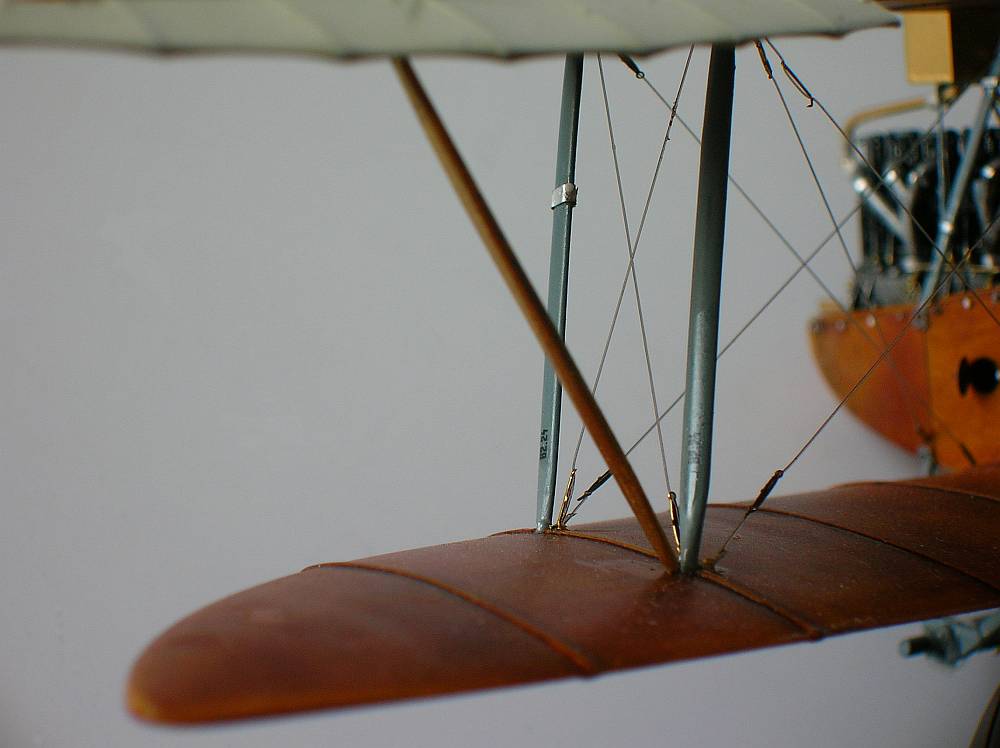 For covering the seams between the veneer panels evergreen stripes (0,5 x 0,25 mm) have been used.
For covering the seams between the veneer panels evergreen stripes (0,5 x 0,25 mm) have been used.
The direction of woodgrain on the wing was a basic question. As there have been no drawings or other information available, I consulted a lot of my friends associated to WWI aviation and even building replicas in 1:1 scale like Koloman Mayerhofer. In long discussions we came to the conclusion it must have been span-wise for static reasons.
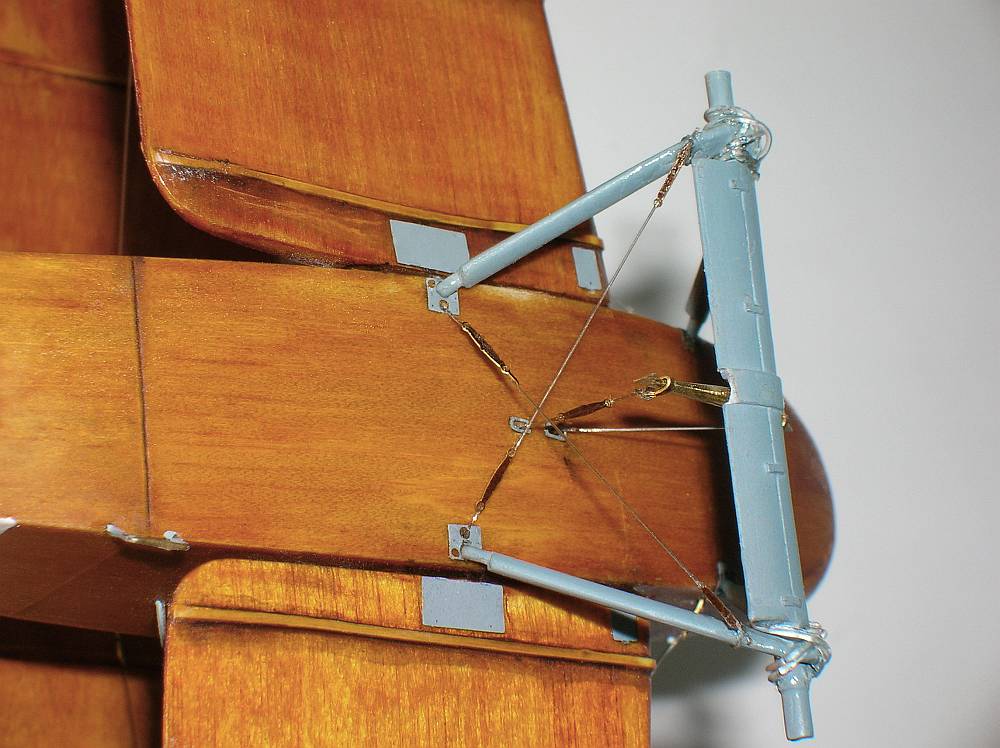 As I found out, much later in an article of a magazine of 1918 about building veneer wings we all have been wrong, it was chord-wise! The reason was, the 3 layer ply was not included in static calculations. Modellers fate, I will not change it on my model.
As I found out, much later in an article of a magazine of 1918 about building veneer wings we all have been wrong, it was chord-wise! The reason was, the 3 layer ply was not included in static calculations. Modellers fate, I will not change it on my model.
The fuselage halves are from the kit. It is always hard to start with the surgery. The cowling has to be removed and all details
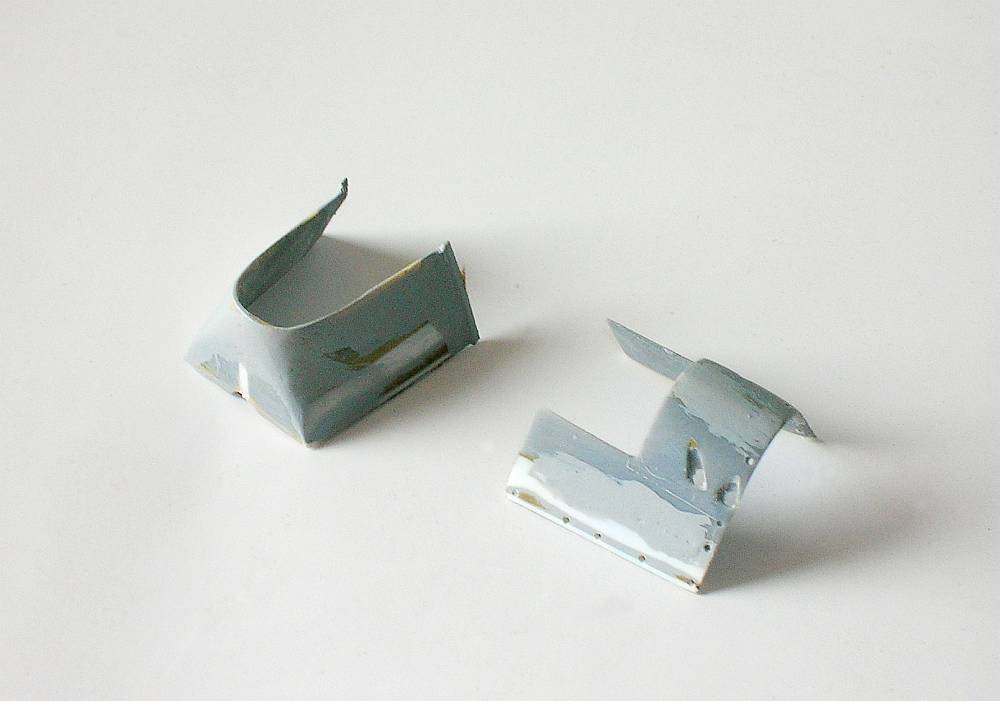 must be sanded down. There was not very much remaining from the fine moulds only the general shape. After extensively sanding the halves have been covered with panels of veneer.
must be sanded down. There was not very much remaining from the fine moulds only the general shape. After extensively sanding the halves have been covered with panels of veneer.
Ailerons, rudder and elevators have been used from the kit with only very few modifications.
The Benz engine was completely made from scratch
Applying the veener
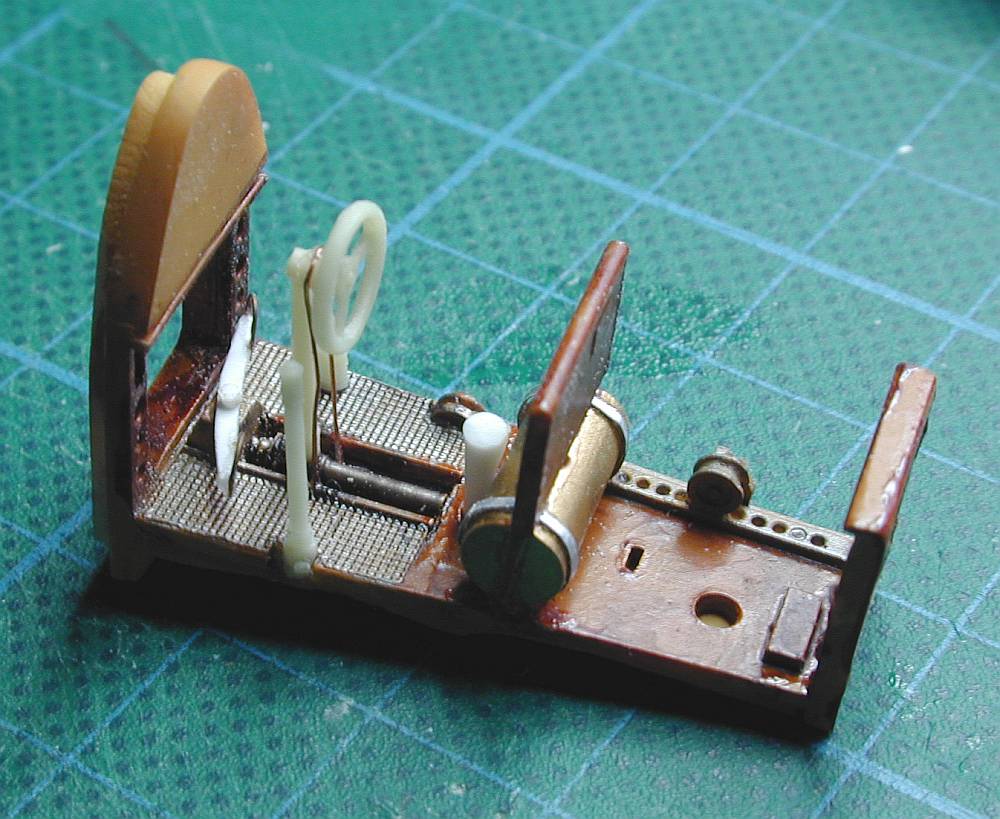 As frequently asked, here is a little instruction of how I usually do it.
As frequently asked, here is a little instruction of how I usually do it.
The material I prefer is birchwood veener, it is flexible, has a very light colour, almost a broken white. Sheets recommended have a thickness of 0,4 to 0,6mm.
The required parts (panels) should be cut out carefully with a very sharp knife. It is recommended to scratch the material along the lines before cutting out. This avoids tearing of the veneer . Glue the panels with
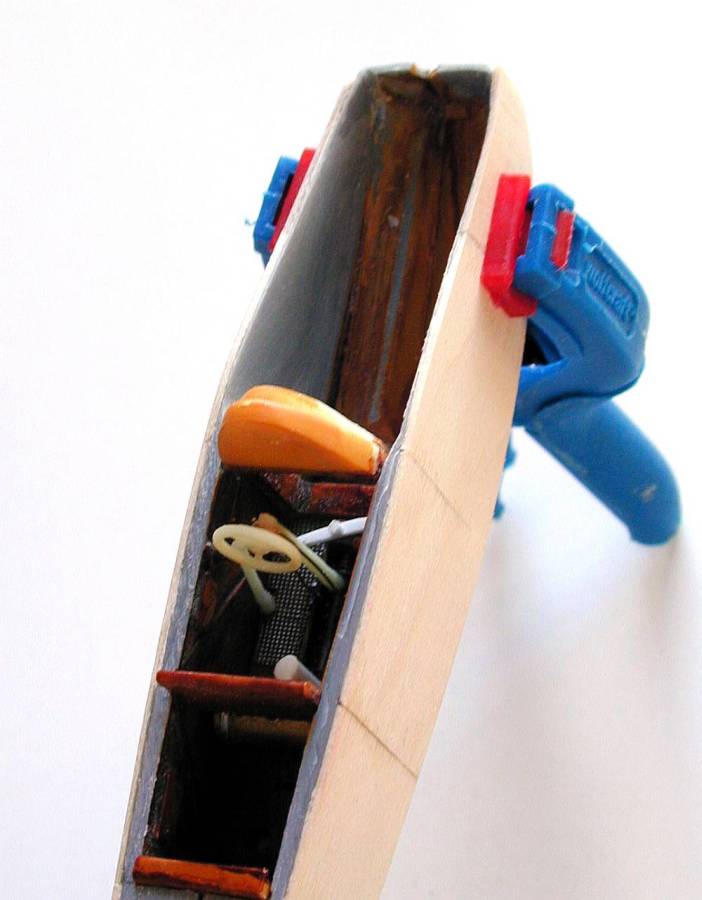 very thin cyanoacrylates as a bonding agent, since this assures that the wood will be soaked through and when fully cured gives a material which is easy to work with. After applying all the panels sand the surface. To get a very realistic looking surface the veneer should be sealed with a shellac varnish. This process should be done several times sanding with wet and dry between coats until the result and colour is satisfying. The more coats of shellac that are applied the darker the colour becomes.
very thin cyanoacrylates as a bonding agent, since this assures that the wood will be soaked through and when fully cured gives a material which is easy to work with. After applying all the panels sand the surface. To get a very realistic looking surface the veneer should be sealed with a shellac varnish. This process should be done several times sanding with wet and dry between coats until the result and colour is satisfying. The more coats of shellac that are applied the darker the colour becomes.
It must look real because birchwood ply was commonly used on Austro Hungarian aircraft of this era.
The Kit
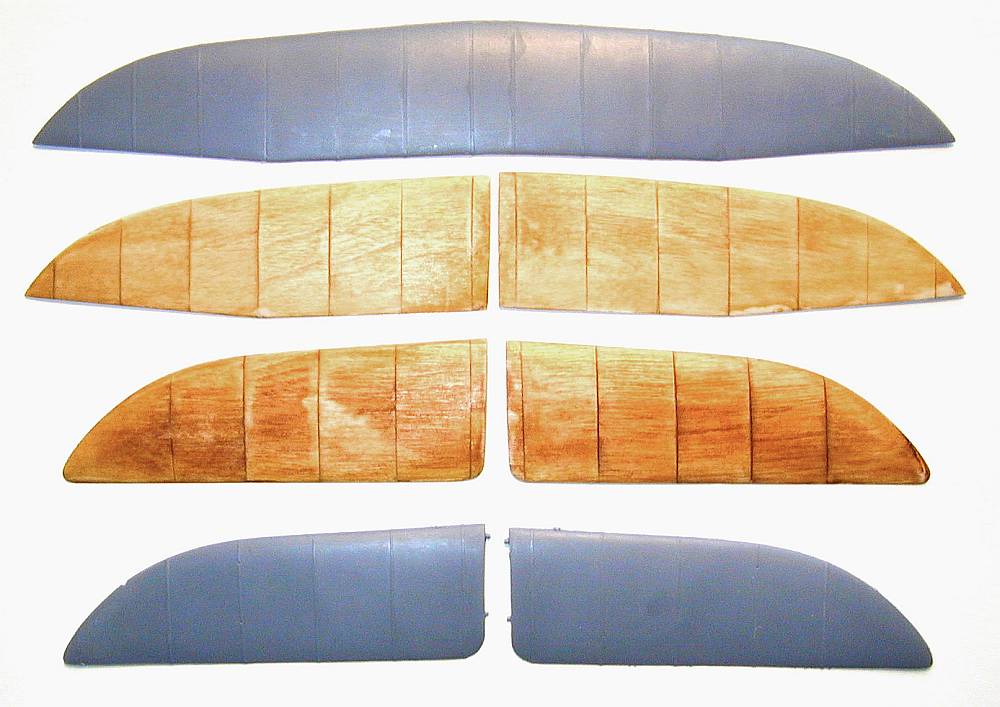 The kit I basically used was No.: SH48013, Lloyd C.V from Special Hobby, in 1/48 scale.
The kit I basically used was No.: SH48013, Lloyd C.V from Special Hobby, in 1/48 scale.
It contains 20 plastic parts provided on 2 sprues, 35 resin parts, 1 fret with photoetched parts, film for the dashboard, decal sheet providing models of series 46.01, 46.04, 46.07 and 46.37 The comprehensive 10 pages instruction sheet leaves no questions open.
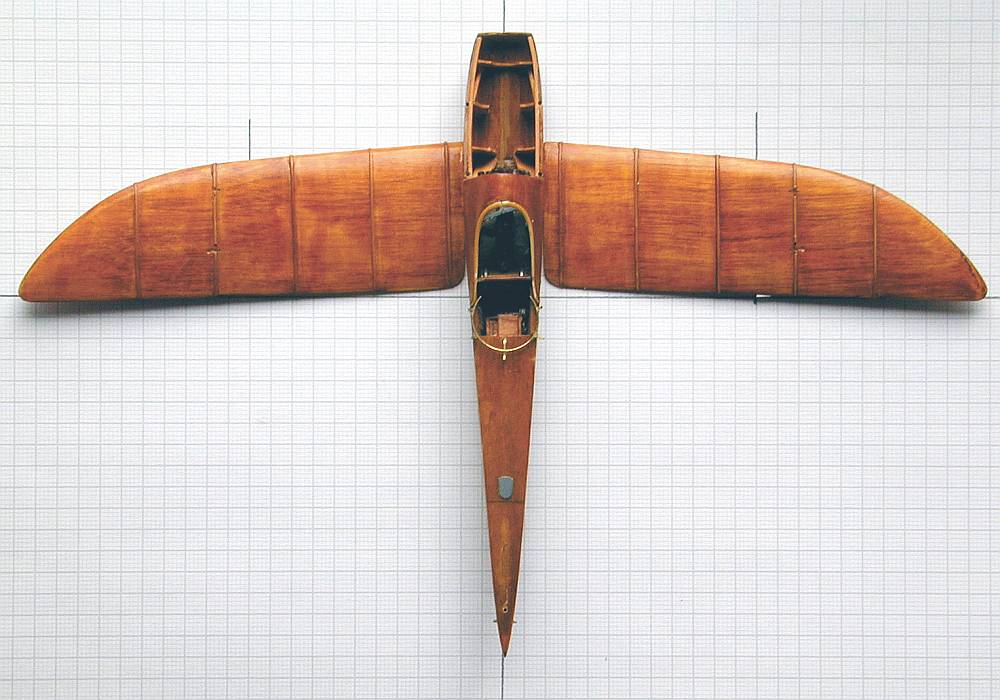 If one wants to make the 46.01 the radiator must be made from scratch because it was different to all others mounted in the front of the upper wing.
If one wants to make the 46.01 the radiator must be made from scratch because it was different to all others mounted in the front of the upper wing.
In my eyes the gun canister is too small and too narrow but this is all there is to mention. The kit is highly recommended and an extremely good basis for a nice model.
Available kits of the Lloyd C.V:
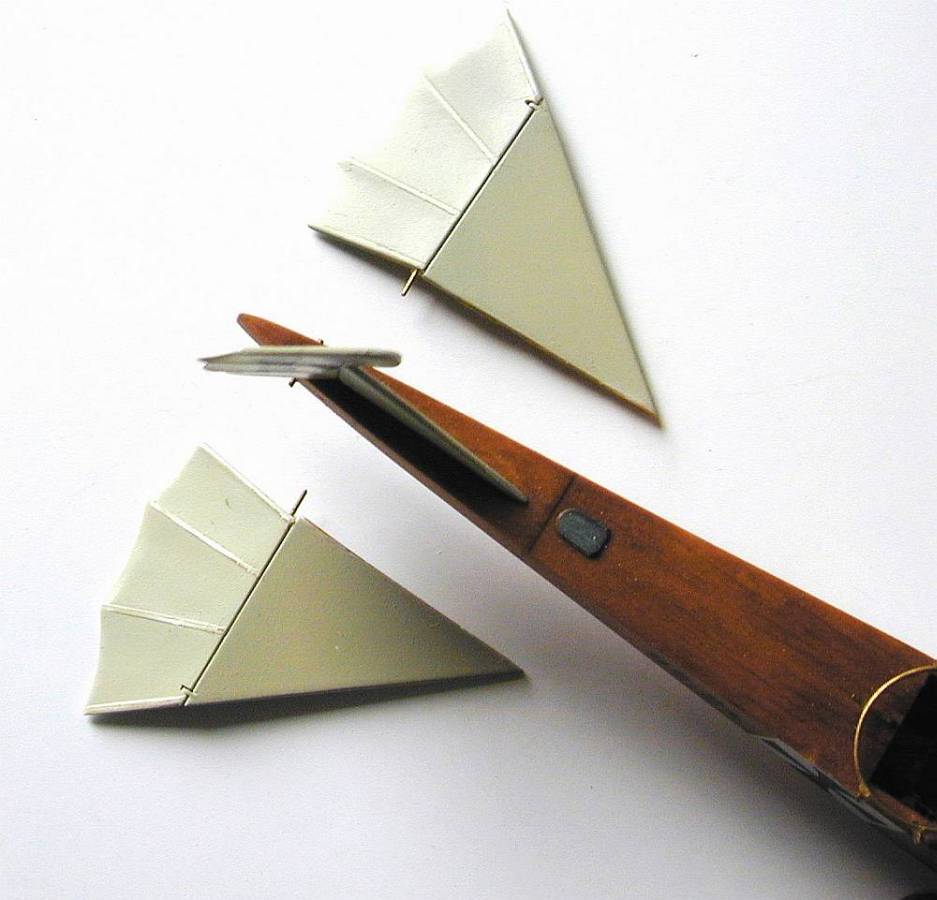 Choroszy Modelbud Resin Kit Series 46.21, 46.37 1:72 scale
Choroszy Modelbud Resin Kit Series 46.21, 46.37 1:72 scale
Special Hobby Plastic Kit 1:72 scale
Sierra Scale Vacu Kit Series 46. 1:48 scale
Special Hobby, Plastic Kit Series 46.01, 46.04, 46.07, 46.37 1:48 scale
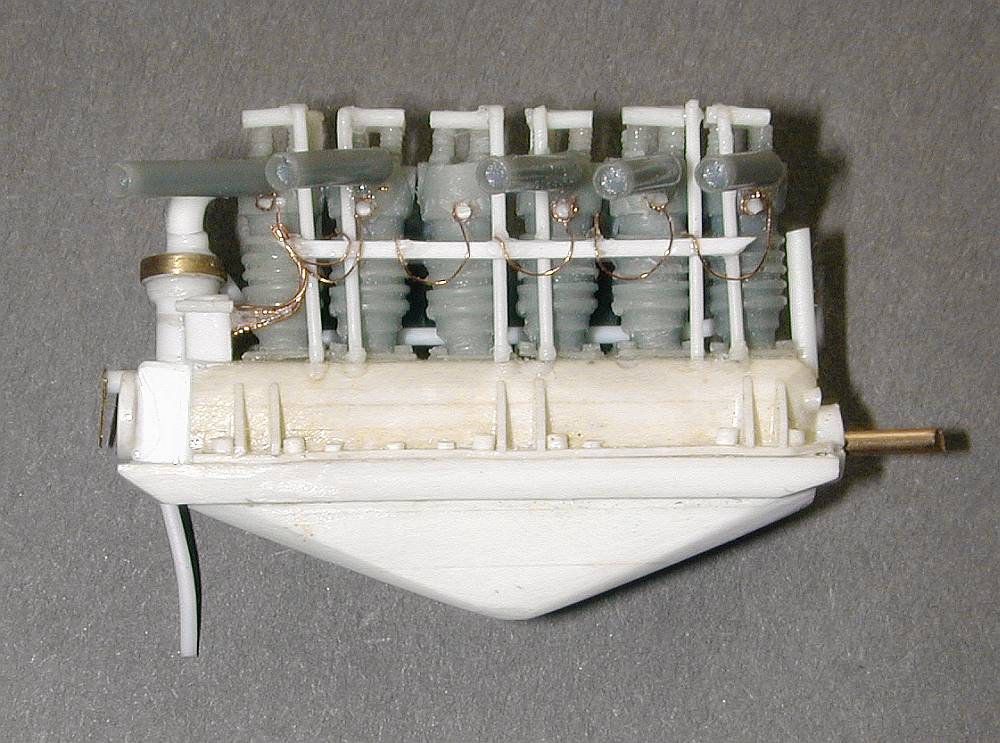 Jager Miniatures Resin Kit Series 46. 1:48 scale
Jager Miniatures Resin Kit Series 46. 1:48 scale
Reference
Austro Hungarian Army Aircraft of World War One, Peter M. Grosz, George Haddow, Peter Schiemer
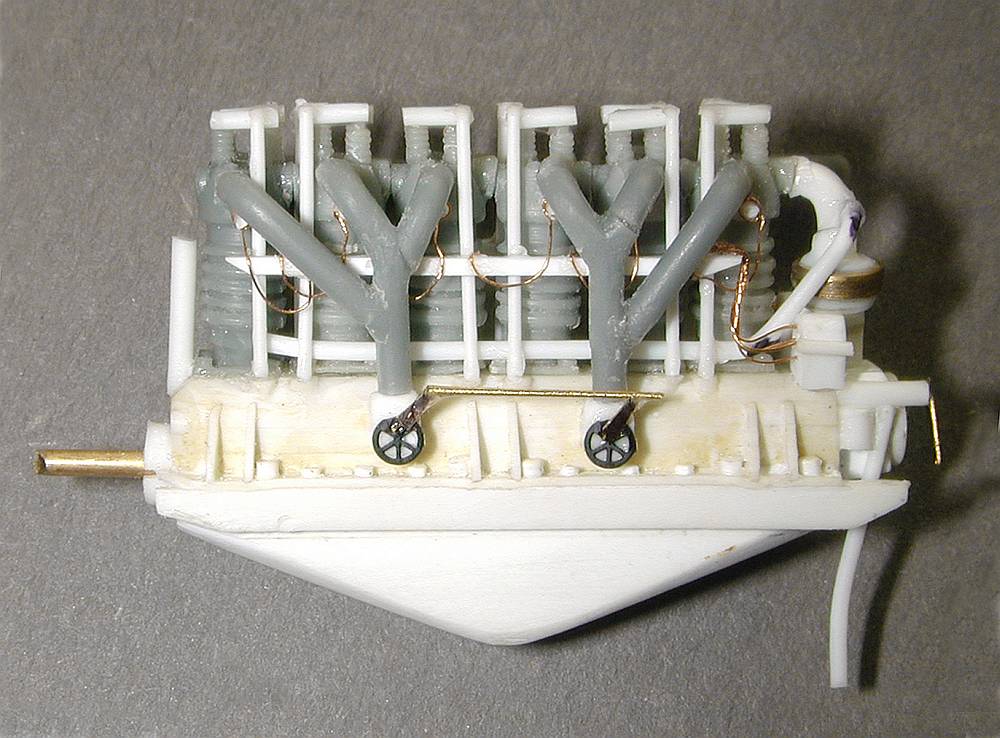 Der Grosse Krieg, die Österreichische-Ungarische Luftfahrtruppen, Jan Zahálka
Der Grosse Krieg, die Österreichische-Ungarische Luftfahrtruppen, Jan Zahálka
Die Flugzeuge der k.u.k. Luftfahrtruppe und Seeflieger 1914-1918, Erwin Hauke, Walter Schröder, Bernhard Tötschinger
